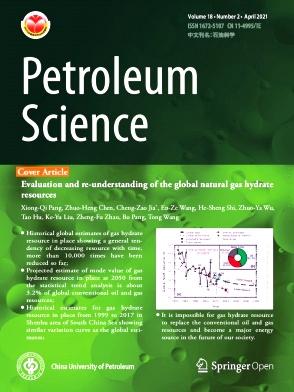Efficient deep-learning-based surrogate model for reservoir production optimization using transfer learning and multi-fidelity data
IF 6
1区 工程技术
Q2 ENERGY & FUELS
引用次数: 0
Abstract
In the realm of subsurface flow simulations, deep-learning-based surrogate models have emerged as a promising alternative to traditional simulation methods, especially in addressing complex optimization problems. However, a significant challenge lies in the necessity of numerous high-fidelity training simulations to construct these deep-learning models, which limits their application to field-scale problems. To overcome this limitation, we introduce a training procedure that leverages transfer learning with multi-fidelity training data to construct surrogate models efficiently. The procedure begins with the pre-training of the surrogate model using a relatively larger amount of data that can be efficiently generated from upscaled coarse-scale models. Subsequently, the model parameters are fine-tuned with a much smaller set of high-fidelity simulation data. For the cases considered in this study, this method leads to about a 75% reduction in total computational cost, in comparison with the traditional training approach, without any sacrifice of prediction accuracy. In addition, a dedicated well-control embedding model is introduced to the traditional U-Net architecture to improve the surrogate model's prediction accuracy, which is shown to be particularly effective when dealing with large-scale reservoir models under time-varying well control parameters. Comprehensive results and analyses are presented for the prediction of well rates, pressure and saturation states of a 3D synthetic reservoir system. Finally, the proposed procedure is applied to a field-scale production optimization problem. The trained surrogate model is shown to provide excellent generalization capabilities during the optimization process, in which the final optimized net-present-value is much higher than those from the training data ranges.
基于迁移学习和多保真度数据的油藏生产优化高效深度学习代理模型
在地下流模拟领域,基于深度学习的替代模型已经成为传统模拟方法的一个有前途的替代方法,特别是在解决复杂的优化问题时。然而,一个重大的挑战在于需要大量高保真度的训练模拟来构建这些深度学习模型,这限制了它们在现场规模问题上的应用。为了克服这一限制,我们引入了一种训练过程,利用多保真度训练数据的迁移学习来有效地构建代理模型。该过程首先使用相对大量的数据对代理模型进行预训练,这些数据可以从升级的粗尺度模型有效地生成。随后,使用更小的高保真仿真数据集对模型参数进行微调。对于本研究中考虑的情况,该方法与传统的训练方法相比,在不牺牲预测精度的情况下,总计算成本减少了约75%。此外,在传统的U-Net体系结构中引入了专用的井控嵌入模型,以提高代理模型的预测精度,在处理井控参数时变的大型油藏模型时尤其有效。对三维合成油藏系统的井速、压力和饱和状态进行了综合预测和分析。最后,将该方法应用于一个油田规模的生产优化问题。经过训练的代理模型在优化过程中提供了出色的泛化能力,其中最终优化的净现值远高于训练数据范围的净现值。
本文章由计算机程序翻译,如有差异,请以英文原文为准。
求助全文
约1分钟内获得全文
求助全文
来源期刊

Petroleum Science
地学-地球化学与地球物理
CiteScore
7.70
自引率
16.10%
发文量
311
审稿时长
63 days
期刊介绍:
Petroleum Science is the only English journal in China on petroleum science and technology that is intended for professionals engaged in petroleum science research and technical applications all over the world, as well as the managerial personnel of oil companies. It covers petroleum geology, petroleum geophysics, petroleum engineering, petrochemistry & chemical engineering, petroleum mechanics, and economic management. It aims to introduce the latest results in oil industry research in China, promote cooperation in petroleum science research between China and the rest of the world, and build a bridge for scientific communication between China and the world.
 求助内容:
求助内容: 应助结果提醒方式:
应助结果提醒方式:


